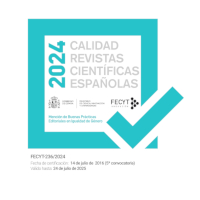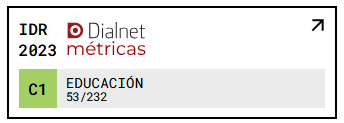From visualization to demonstration
DOI:
https://doi.org/10.18172/con.2717Keywords:
Display, proof, regular pentagon, exact construction, didactics of mathematicsAbstract
The purpose of this research is to assess the reasoning of a group of Chilean mathematics teachers and a group of students of a “High School Teacher” master’s degree, about the assurance of the accuracy, or not, of some geometric constructions of a regular pentagon inscribed in a circumference. Data analysis reveals that, in general, they do not use the construction procedures to argue about the accuracy and rigor of the construction. Instead of it, they give justifications based on sensory perceptions, memories or they use arithmetic procedures that fail to coordinate with the visualization of the construction process and geometric construction itself.
Downloads
References
Ball, D. L., Thames, M. H., y Phelps, G. (2008). Content knowledge for teaching: What makes its special? Journal of Teacher Education, 59(5), 389-407.
Bataille, M. (2009). Another compass-only construction of the golden section and of the regular pentagon. Forum Geom., 8, 167-169.
De Guzmán, M. (1996). El rincón de la pizarra. Madrid: Pirámide.
Duval, R. (1995). Figures Geométriques et discours mathématique. En Sémiosis et pensée humaine: registres sémiotiques et apprentissages intellectuels (pp. 173- 207). New York: Peter Lang.
Eisenmann, P., Kopka, J., Ondrušová, J., y Pˇribyl, J. (2013). The strategy of reformulation of a problem. En M. Billich (Ed.), Mathematica IV. Proceedings of the Polish-Czech-Slovak mathematical conference, Catholic University (pp. 31-36). Ružomberok: Verbum, Catholic University in Ružomberok Press.
Fernández, T. (2013). La investigación en visualización y razonamiento espacial. Pasado, presente y futuro. En A. Berciano, G. Gutiérrez, N. Climent y A. Estepa (Eds.), Investigación en Educación Matemática XVII (pp. 19-42). Bilbao: Sociedad Española de Investigación en Educación Matemática (SEIEM).
Hofsteter, K. (2013). A simple compass-only construction of the regular pentagon. Forum Geom., 8, 147-148.
Jakobsen, A., Thames, M. H., y Ribeiro, M. (2013). Delineating issues related to Horizon Content Knowledge for mathematics teaching. En B. Ubuz y M.A. Mariotti (Eds.), Actas del CERME 8 (pp. 3055-3064). Antalya, Turquía: ERME.
Lord, N. (2010). From hexagon to pentagon. SYMmetryplus, 38, 14.
Miles, D., y Pritchard, C. (2009). Three trigonometric results from a regular pentagon. Math. Sch. (Leicester), 38(1), 33-34.
Presmeg, N. C. (1997). Generalization using imagery in mathematics. En L. D. English (Ed.), Mathematical Reasoning: analogies, metaphors and metonymies in mathematics learning (pp. 299-312). Mahwah, NJ: Erlbaum.
Presmeg, N. C. (2006). Research on visualization in learning and teaching mathematics. En A. Gutiérrez y P. Boero (Eds.), Handbook of research on the psychology of mathematics education: Past, present and future (pp. 205-235). Rotterdam, The Netherlands: Sense Publishers.
Presmeg, N. (2011). Overcoming Pedagogical Barriers Associated with Exploratory Tasks in a College Geometry Course. En O. Zaslavsky y P. Sullivan (Eds.), Constructing Knowledge for Teaching Secondary Mathematics (pp. 279-290). New York: Springer.
Pritchard, C. (2013). Fibonacci pegs and an angel theorem. Math. Sch. (Leicester), 41(5), 10-11.
Schoenfeld, A. (2010). How we think. New York: Routledge.
Shulman, L. S. (1986). Those who understand. Knowledge growth in teaching. Educational Researcher, 15(2), 4-14.
Downloads
Published
How to Cite
Issue
Section
License
The authors retain copyright of articles and authorize Contextos Educativos. Revista de Educación the first publication. They are free to share and redistribute the article without obtaining permission from the publisher as long as they give appropriate credit to the editor and the journal.
Self-archiving is allowed too. In fact, it is recommendable to deposit a PDF version of the paper in academic and/or institutional repositories.












